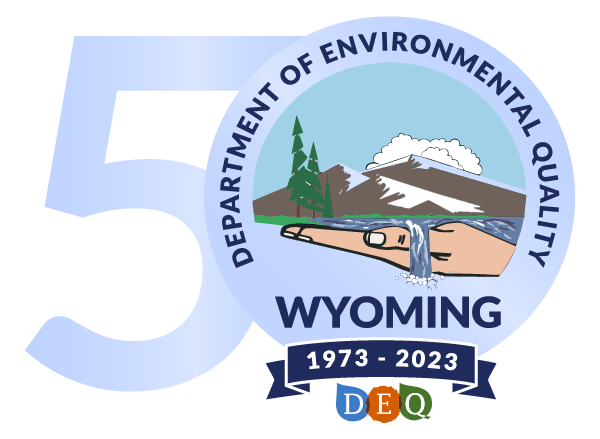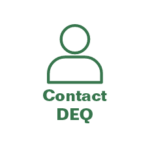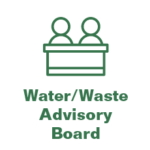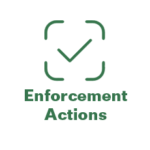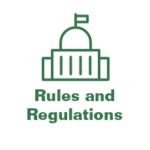- Home
- Public
- Resources
- Advanced Search
- Advisory Boards
- Careers
- District Offices
- e-Payment
- Enforcement Actions
- Meet the Director
- Mission Statement and Values
- Nondiscrimination Policy
- Outreach and Public Information
- Public Comments Online Portal
- Public Notices
- Records Requests
- Spill and Complaints
- State of the Environment
- Topics
- Divisions
- News
- Calendar
Pollution Prevention
- Home
- Solid & Hazardous Waste
- Voluntary Remediation Program
- Pollution Prevention
The DEQ undertakes enforcement actions to preserve safe environmental conditions throughout Wyoming.
This page contains information on the enforcement actions that the Solid and Hazardous Waste Division may undertake, as well as a record of enforcement actions that have been undertaken by SHWD.
If the download box is not working below, please click here.
In response to the Governor's request to limit contact and the move toward most WDEQ staff working remotely for the near future, the Solid and Hazardous Waste Division (SHWD) have made electronic document submittal available. This includes work plans, reports, general correspondence and Solid Waste permit applications. Electronic submittal forms are now available for SHWD programs. Please choose the appropriate form from the list of links below to upload documents. If submitted electronically, no hardcopy is required to be submitted unless you are contacted by SHWD staff with a request to submit the hard copy. Please note that SHWD is unable to accept comments on documents in public notice via these forms. Please refer to the public notice for instructions on how to submit comments.
Hazardous Waste, Voluntary Remediation, Orphan Site Programs
https://bit.ly/WDEQ-SHWD-HW-
https://bit.ly/WDEQ-SHWD-STP-upload
This page contains any proposed Rules or Regulations that are currently under development within the Solid and Hazardous Waste Division.
Hazardous Waste Rules, Chapter 1
The Hazardous Waste Rules, Chapter 1, General Provisions were adopted and filed with the Wyoming Secretary of State on April 7, 2022. See https://rules.wyo.gov/.
Solid Waste
The Solid Waste Permitting and Corrective Action Program is conducting a public outreach on proposed revisions to the Solid Waste Rules Chapter 3 Industrial Landfills Regulations.
All official Wyoming State Rules and Regulations are kept at the Wyoming Secretary of State’s Office. Click here to view all current Rules and Regulations.
Pollution Prevention
The Pollution Prevention (P2) Plan exists to help prevent the release of dangerous pollutants and toxins, preserving the quality of Wyoming’s environment for its citizens and wildlife.
During the creation of the Wyoming Voluntary Remediation Program, the Wyoming Legislature recognized the need for facility owners and operators to do everything possible to prevent contaminants from being released to the environment. As a result, in order to encourage pollution prevention activities, the Legislature added the requirement that facilities must implement a written P2 Plan, or “alternative minimum pollution prevention operating standards,” to be eligible for VRP participation.
To learn about why the P2 Plan Rule is important to Wyoming, and how it can benefit your business or organization, click below.
What Constitutes the P2 Plan?
The P2 Plan Rule establishes two categories of “facilities,” each with a different level of required P2 Plan documentation as a condition of VRP eligibility.
- Large quantity generators (LQGs) of hazardous waste, regulated under Chapter 8 of the Wyoming Hazardous Waste Management Rules and Regulations
Required to have a Spill Prevention Control and Countermeasure (SPCC) Plan
Required to have a DOT Response Plan or Emergency Response Plan
Subject to EPA’s “Toxic Chemical Release Reporting” requirements
Regulated under Chapters 10 or 11 of the Wyoming Hazardous Waste Management Rules and Regulations (as an interim status or permitted waste treatment, storage or disposal facilities)
Regulated by the DEQ’s Storage Tank Program (STP); VRP eligibility is applicable only for releases from sources other than the regulated tanks
To be considered for participation in the VRP, these Category 1 facilities will be required to be implementing a formal, written P2 Plan in accordance with the time frames established in the P2 Plan Rule.
- Any other site or facility – storing, using or generating contaminants – that does not meet the threshold classifications listed in the Category 1 section above
To be considered for participation in the VRP, these Category 2 facilities must demonstrate to the satisfaction of the DEQ Administrator that they are implementing the alternative minimum pollution prevention operating standards (described in the rule) in accordance with the time frames established in the P2 Plan Rule.
If the download box is not working below, please click here.
If the download box is not working below, please click here.
Click here to access the Wyoming Department of Environmental Quality (DEQ), Voluntary Remediation Program (VRP) Interactive Toolbox for help in developing Pollution Prevention Plans (P2 Plans).
Currently this tool is not available.
This page contains a variety of useful documents regarding P2 Plan rule adoption information and procedures.
- Statement of Principal Reasons for Adoption (note, this statement was filed with the Wyoming Secretary of State's Office on January 8, 2010)
- Signed and Dated Certification Page
- Federal Rules referenced in Section 4(a) of Chapter 1:
If the download box is not working below, please click here.
Without the implementation of P2 activities after the effective date, owners/operations whose businesses store/generate/create contaminants will not be eligible to take advantage of the VRP and voluntarily cleanup contaminants.
The important benefits of the VRP (benefits that are not available through any other DEQ program) that are not accessible unless you implement the P2 Plan include the following:
- Issuance of liability assurances after successful site cleanup
- The possibility of calculating site-specific soil cleanup levels
- The ability to petition for a Use Control Area, under certain circumstances.
All of these benefits are tremendously useful for site cleanup and restoration.
How can the P2 Plan Rules Benefit Your Business?
The P2 Plan Rules help prevent accidental releases of contaminants, which can have the following postiive outcomes:
- Save money by not wasting materials
- Save money that would otherwise be spent cleaning up the resulting contamination that can occur to soils, surface water and groundwater on your property or your neighbor's property - this can be VERY expensive and take months to years to accomplish
- Prevent exposing employees and the public to the potentially harmful health effects resulting from contact with certain spilled chemicals
